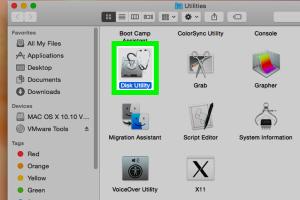Ultimate Guide to Repairing Bad Sectors on Your Hard Drive

-
Quick Links:
- Understanding Bad Sectors
- Types of Bad Sectors
- Causes of Bad Sectors
- Diagnosing Bad Sectors
- Repairing Bad Sectors
- Using Disk Repair Tools
- When to Replace Your Hard Drive
- Preventing Bad Sectors
- Real-World Case Studies
- Expert Insights on Hard Drive Maintenance
- FAQs
Understanding Bad Sectors
Bad sectors are areas on a hard drive that cannot be read or written to. They can lead to data loss and system instability, making it crucial to understand what they are and how to manage them. A bad sector may not always indicate a failing hard drive, but it can be a sign of underlying issues that need immediate attention.
Types of Bad Sectors
- Hard Bad Sectors: Permanent physical damage to the disk surface.
- Soft Bad Sectors: Temporary issues often caused by file system corruption or improper shutdowns.
Causes of Bad Sectors
Understanding the causes of bad sectors can help you prevent them. Common causes include:
- Physical Damage: Drops, shocks, or other physical impacts.
- Electrical Failures: Power surges or outages during write operations.
- Software Corruption: Improper shutdowns or software failures.
Diagnosing Bad Sectors
To diagnose bad sectors, you can use built-in tools such as:
- Windows CHKDSK
- Mac's Disk Utility
- Third-party software like HD Tune or CrystalDiskInfo
These tools can help identify both hard and soft bad sectors and provide options for repair.
Repairing Bad Sectors
Repairing bad sectors can be a delicate process. Here’s a step-by-step guide:
Step 1: Backup Your Data
Before proceeding, always back up your important data as repairs can lead to further data loss.
Step 2: Run CHKDSK
On Windows, use the Command Prompt to run CHKDSK:
chkdsk C: /f /rThis command checks for errors and attempts to fix them.
Step 3: Use Third-Party Tools
Consider using tools like SpinRite or HDD Regenerator for a more thorough repair.
Using Disk Repair Tools
There are various tools available for repairing bad sectors:
- SpinRite: Effective for recovering data and repairing damaged sectors.
- HDD Regenerator: A powerful tool for repairing bad sectors on hard drives.
- Recuva: Useful for recovering lost files from damaged drives.
When to Replace Your Hard Drive
If bad sectors continue to appear after repairs, it might be time to replace the hard drive. Signs that indicate replacement include:
- Frequent bad sector reports after repairs.
- Unusual noises from the drive.
- Frequent system crashes or data corruption.
Preventing Bad Sectors
Here are some preventive measures to minimize the risk of bad sectors:
- Regularly back up your data.
- Use a surge protector to prevent electrical damage.
- Perform regular disk checks and maintenance.
Real-World Case Studies
Examining real-world cases can provide insights into the severity of bad sectors and the effectiveness of different repair methods. For example:
Case Study 1: A Small Business's Data Recovery
A small business faced significant data loss due to bad sectors on their primary hard drive. By using a combination of CHKDSK and HDD Regenerator, they were able to recover 90% of their lost data and successfully migrate to a new hard drive.
Case Study 2: Home User Experience
A home user discovered bad sectors during a routine check. They attempted repairs using CHKDSK and later upgraded to a solid-state drive (SSD) for better reliability, significantly reducing the occurrence of bad sectors.
Expert Insights on Hard Drive Maintenance
Experts recommend regular maintenance and monitoring of hard drives. Keeping an eye on the SMART (Self-Monitoring, Analysis, and Reporting Technology) status of your drive can provide early warnings of potential failures. Additionally, using high-quality power supplies can help mitigate electrical issues.
FAQs
1. What are bad sectors?
Bad sectors are areas on a hard drive that are damaged and cannot reliably read or write data.
2. Can bad sectors be repaired?
Soft bad sectors can often be repaired using disk utilities, while hard bad sectors may indicate physical damage and could require drive replacement.
3. How can I check for bad sectors on my hard drive?
You can use tools like CHKDSK on Windows or Disk Utility on Mac to check for bad sectors.
4. What tools are best for repairing bad sectors?
Tools like SpinRite, HDD Regenerator, and Recuva are highly recommended for repairing and recovering from bad sectors.
5. How often should I check my hard drive for bad sectors?
It's advisable to check your hard drive at least once a month, especially if you notice performance issues.
6. What should I do if I find bad sectors?
Back up your data immediately and run a disk repair tool to assess and potentially fix the issue.
7. Can bad sectors affect SSDs?
Yes, SSDs can also experience bad sectors, albeit in a different manner, typically referred to as "bad blocks."
8. Is it safe to use a hard drive with bad sectors?
Using a drive with bad sectors can lead to data loss. It is recommended to replace the drive if bad sectors persist.
9. How do I prevent bad sectors from occurring?
Regular backups, proper shutdowns, and using surge protectors can help prevent bad sectors.
10. What is the lifespan of a hard drive?
The average lifespan of a hard drive is about 3 to 5 years, though this can vary based on usage and care.
In conclusion, managing bad sectors is crucial for maintaining hard drive integrity and data security. By understanding the types, causes, and repair methods, you can prolong the life of your hard drive and minimize potential data loss.